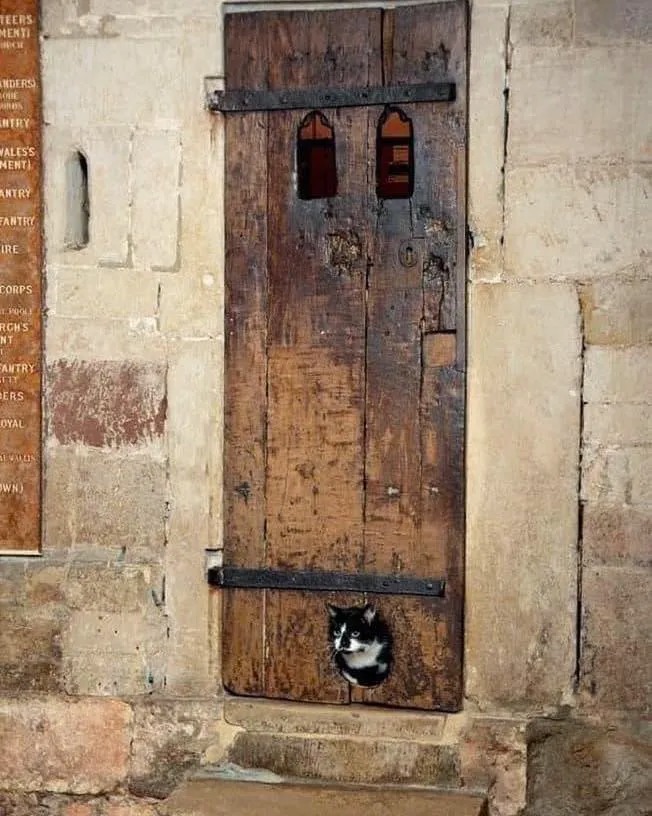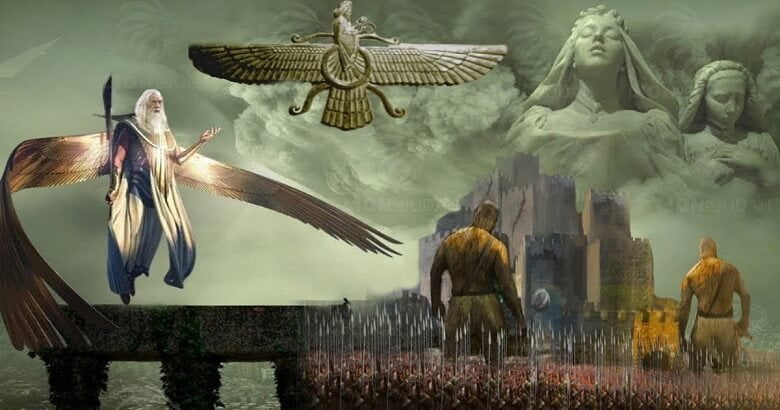Is the hole in the door below the astronomical clock of Exeter Cathedral, Exeter, England, UK the earliest existing cat flap? The trouble is it is not exactly a cat flap because there is no flap. It is a cat entrance and exit if we are going to be boringly accurate. But this cat entrance and exit dates back to around 1600 or the early 1600s.

Earliest cat flap, Exeter Cathedral. Hole cut around 1600.
The door is below a famous astronomical clock. This is no coincidence. The clock’s mechanism was oiled with animal fat, which attracted mice. The cat was an employee of the cathedral paid a penny a week for his services in ridding the area of mice. An important role. This information is available in a leaflet at the cathedral. This cat was clearly an indoor/outdoor cat!
Some say that the well-known nursery rhyme, Hickory Dickory Dock, is based on the mice of the Exeter Cathedral astronomical clock:
Hickory, dickory, dock,
The mouse ran up the clock.
The clock struck one,
The mouse ran down,
Hickory, dickory, dock.

The earliest version of the rhyme was first published in 1744.
That leads us to Sir Isaac Newton, the man who invented the theory of gravity. He loved cats and had a hole cut into his study door or attic door or barn door to let his cat come and go. Isaac Newton lived from 25 December 1642 to 20 March 1727 so his cat flap…cat entrance/exit…was not the first.
Apparently the first mention of a cat flap is in a poem of around 1300 by Hugo von Trimberg who refers to a ‘cat window’ in an abbey gate.

There is a painting from the mid-15th century i.e. 1400s which is known as the Madonna della Gattaiola (“Our Lady of the Cat Door”). It seems that this painting was used as a door and because of that somebody had cut a hole in the bottom of it for a cat to pass through. It was a door, apparently, to a church’s sacristy. Also, there appears to be a reference to a hole in the door for a cat to pass through in Chaucer’s Miller’s Tale from Canterbury Tales in the late 14th century.

